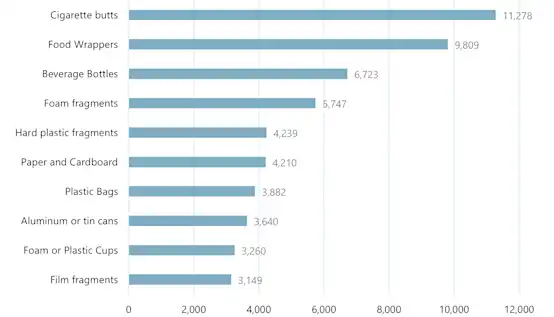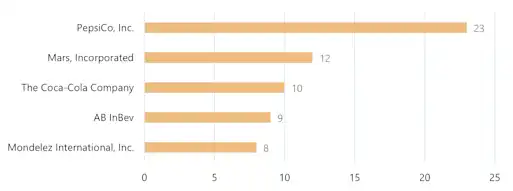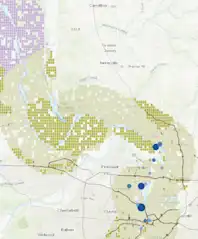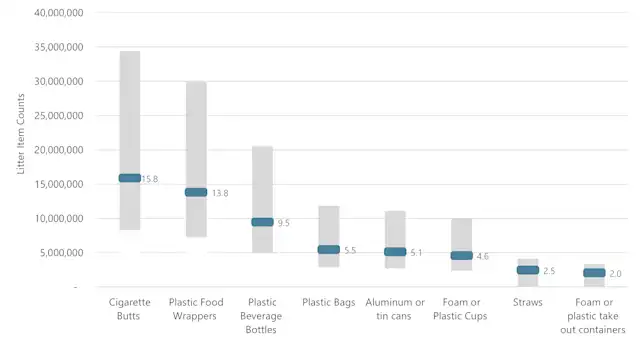By Rachel Gladstone
Marine Debris Tracker proudly partnered with the Mississippi River Cities and Towns Initiative and United Nations Environment Program to generate a first-ever snapshot of the state of plastic pollution along the Mississippi River. The Mississippi River Plastic Pollution Initiative began in 2018 when cities and towns along the Mississippi River made a commitment to reduce plastic pollution in the Mississippi River Valley by 20% in 2020. As a part of this initiative, the Mississippi River Cities and Towns Initiative (MRCTI) thought it imperative to generate as rich a picture as possible of the extent and type of litter that can make its way to the Mississippi River.
Beginning in the spring of 2021, thousands of community volunteers used Marine Debris Tracker to survey target areas along the river. The following cities participated in this initiative:
Baton Rouge, LO
St. Louis, MO
St. Paul, MN
Davenport, IA
Bettendorf, IA
Rock Island, IL
Moline, IL
East Moline, IL
Rosedale, MS
Greenville, MS
174,868 items were logged on the MRCTI list on the Marine Debris Tracker app. 75% of the items found were plastic, followed by paper (9%), metal (7%), glass (5%) and PPE like masks, wipes, and gloves (2%).
A wide variety of items were recorded, but the most common types were cigarette butts, food wrappers, and beverage bottles. This information was valuable to MRCTI because, by identifying the most common items, communities can focus on item-specific interventions to reduce litter in their area. As an example, cigarettes are made of cellulose acetate, a type of plastic; communities can create educational campaigns as to why littering cigarettes are very harmful to the environment in order to reduce this kind of pollution.
The top ten items logged in the Mississippi River corridor are shown below.

Debris Tracker app users were encouraged to note brands on items when possible. Identifying brands and parent companies was of particular interest to MRCTI because it can present clear opportunities for corporate engagement around litter reduction and extended producer responsibility.
Participants collected brand information on 341 items with the top 5 brands found shown below.

This data was used to create a risk map to show areas that are more or less likely to have litter. Risk maps were important for this initiative because they help prioritize areas for community decision makers when considering use of resources and intervention actions. Sites within 10 km of the river were assigned a risk value using multiple variables including: median household income, population size, and distance from a material recovery facility. Using collection data and these variables, an interactive Mississippi Corridor Risk Map was made and can be found here.

So how does this data paint a picture of debris along the entire Mississippi River? By extrapolating litter densities along the river, a median and range value for litter items could be estimated for the entire river. From this, it is estimated that 87 million plastic litter items are found on the ground in communities along the river. It is important to emphasize that this is a snapshot in time of plastic pollution in a given moment along the Mississippi River. Further detailed estimates of common litter items are included below:

The full report can be accessed on UNEP's website here.
Using community science, thousands of volunteers helped create a picture of the state of litter along the Mississippi River. This data highlights specific items that could be targeted for intervention and where this intervention could be most effective. This story is one of many to show how community science tools like Debris Tracker can help create a bigger picture of plastic pollution through collecting open data, generating scientific findings, informing policy, and inspiring upstream design.
Thank you to the communities and volunteers along the Mississippi River for contributing data to this effort. We hope that this initiative will lead to cleaner waters and land along the Mississippi!
